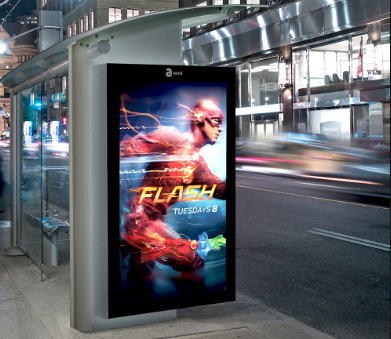How to Use Analytics to Boost DOOH Campaigns
By Gulaiym Agbal
Regardless of whether you are an advertiser or a DOOH media network you are dependent on analytics for executing campaigns.
Analytics are the backbone of online advertising, and with improvements in data capturing technology DOOH is getting there very quickly.
Advertisers wish to spend more on digital signage but are constrained by lack of data that is essential for determining the true ROI. In the absence of data, implementing digital signage campaigns is not a very satisfactory process. Also, without data it becomes difficult to integrate DOOH with online advertising, and to truly implement programmatic buying for digital signage.
With data comes insight, and this can really help you to run creative campaigns and target an audience individually or collectively.
With analytics, you can use digital signage to display rich and dynamic content that responds to data in real time. This can drive engagement, sales, brand recognition, and have an all-round salubrious effect on your business. Location based DOOH can truly come into its own if it is backed by data. Consider digital signage in malls, restaurants, parking lots, multiplexes, etc. and then imagine the effect of real-time data on the content that can be flashed at these locations.
By 2019, DOOH will be a $45 billion industry in America. As a network provider, if you wish for a big chunk out of this ad spend then you need to provide advertisers with information that they can use to decide digital signage types, locations, content timing, and other factors.
Advertisers are willing to pay premium fees for analytics because it gives them information that they can actually use. Network providers benefit from the high screen fill rates and also by being able to attract more advertisers on the strength of the analytics they provide.
Generally, the fees for real time analytics are around ten to twenty percent of the total cost of a DOOH campaign. Advertisers have absolutely no problem in paying the extra amount. Data-based insight that advertisers obtain can give them a crucial advantage over competitors who are reliant on old school methods of data gathering such as surveys. Advertisers can discover new revenue channels and implement new revenue streams with the help of data.
Analytics platforms are paired with the digital signage content management systems for gathering primary data that includes the location, content types, sequence of display, timings, etc. This data is known as primary data, and we can derive secondary data from it. Secondary data includes consumer traffic and behavior. This data is recorded by the analytics platforms.
With secondary data, analytics platforms can measure impressions, dwell times, engagement, and conversion. You can easily view the data in the form of graphs and charts to quickly understand critical performance behaviors that you can then use to improve the performance of DOOH marketing.
Smartphones with either Wi-Fi or Bluetooth switched on are the primary source of secondary data for DOOH marketers. This data is transferred by the internet to analytics platforms where it can be used to measure performance, convergence, impressions, retentions, etc.
With this data in hand you can easily measure performance by finding out the number of impressions that convert. Retention is defined as the number of impressions that convert into dwell times. Retention ratings can be used to carry out split tests for assessing content that manages to hold consumer interest for a longer period. Engagement ratings are a percentage of dwell times that result in engagements. Generally, if you can get five people to engage out of every hundred that dwell on the ad then you are doing fine. Both dwell times and engagements improve with one-on-one interaction between the digital signage and audience. VODXS faucet ad systems enable such engagements. These systems are increasingly being used in washrooms across the United States.
Analytics allow you to track engagement that result in conversions. The conversion could be an app download a sign up or a purchase. Conversions are an excellent metric for identifying the most suitable calls to action. Overall effectiveness of digital signage campaigns can be measured through the conversion ratings.
With primary and secondary data in hand, you can move on to leveraging tertiary data. Tertiary data lets you drill down deep and reach out to individuals with targeted messaging. This data includes the audience’s age, gender, income, etc. Search data is usually permission-based and requires an opt-in.
The true value of real-time analytics through tertiary data is that it lets you alter content depending upon the audience at a given point in time and you can do this automatically. So, for example, analytics API linked to the digital signage CMS can access information about an individual’s browsing habits and online purchases, and serve relevant ads depending upon the location and other factors that you may specify.
With real-time data to drive the content schedule, digital signage can replace existing content with more relevant one.
Finally, both advertisers and digital signage network owners can truly benefit from historical data. This data allows you to run experiments, compare results of experiments, ascertain trends, and make the necessary adjustments in content display screen sizes, location, etc.

